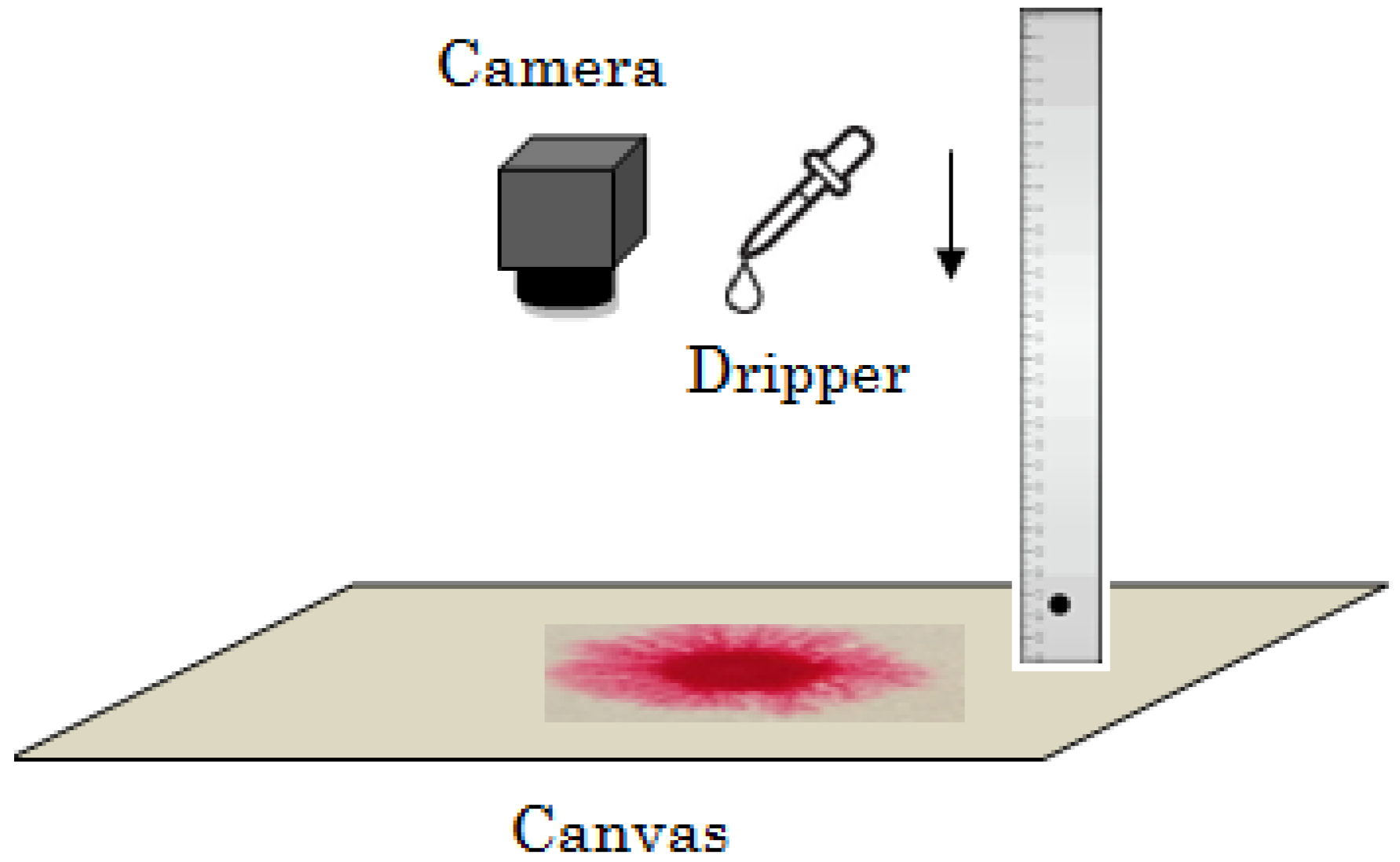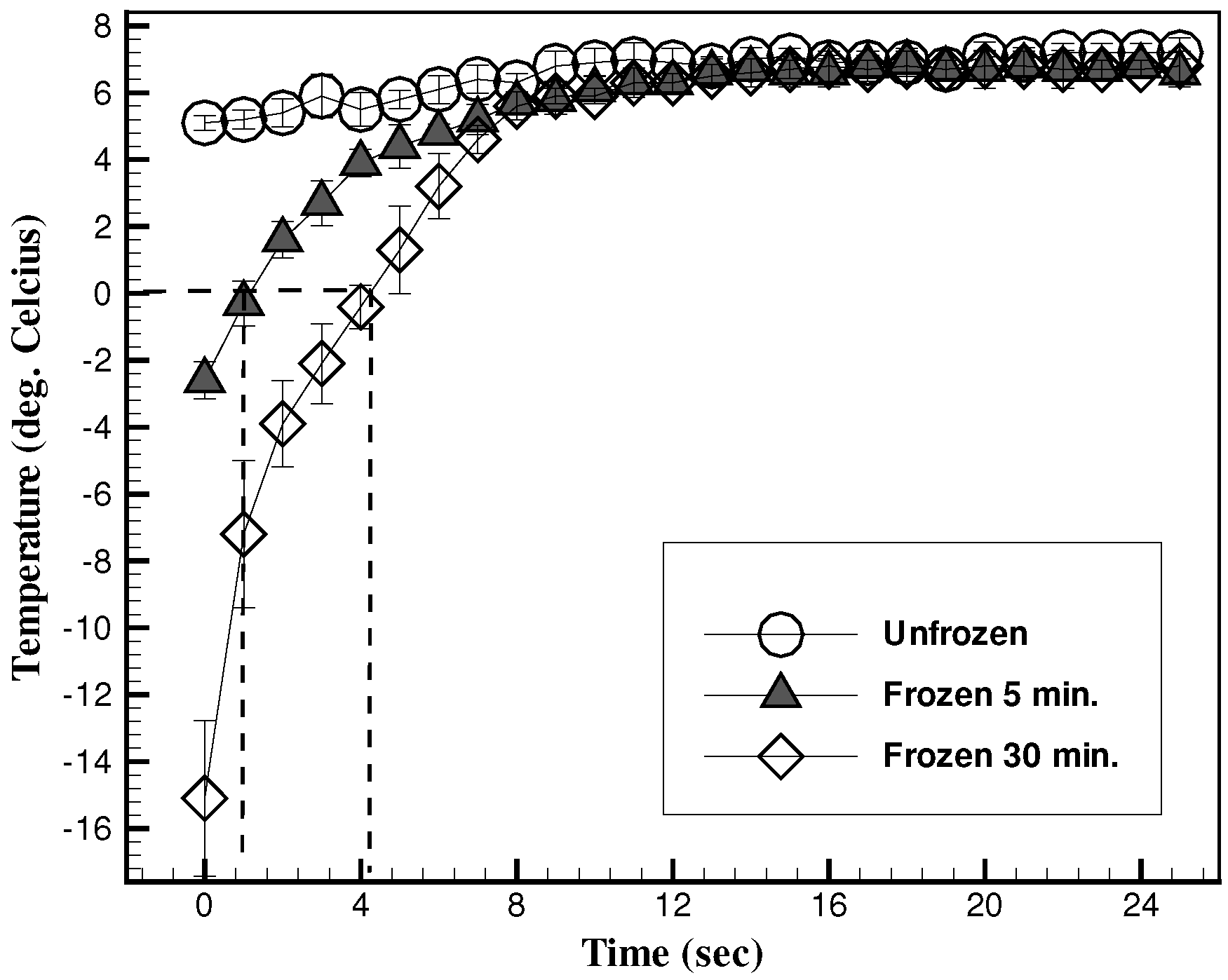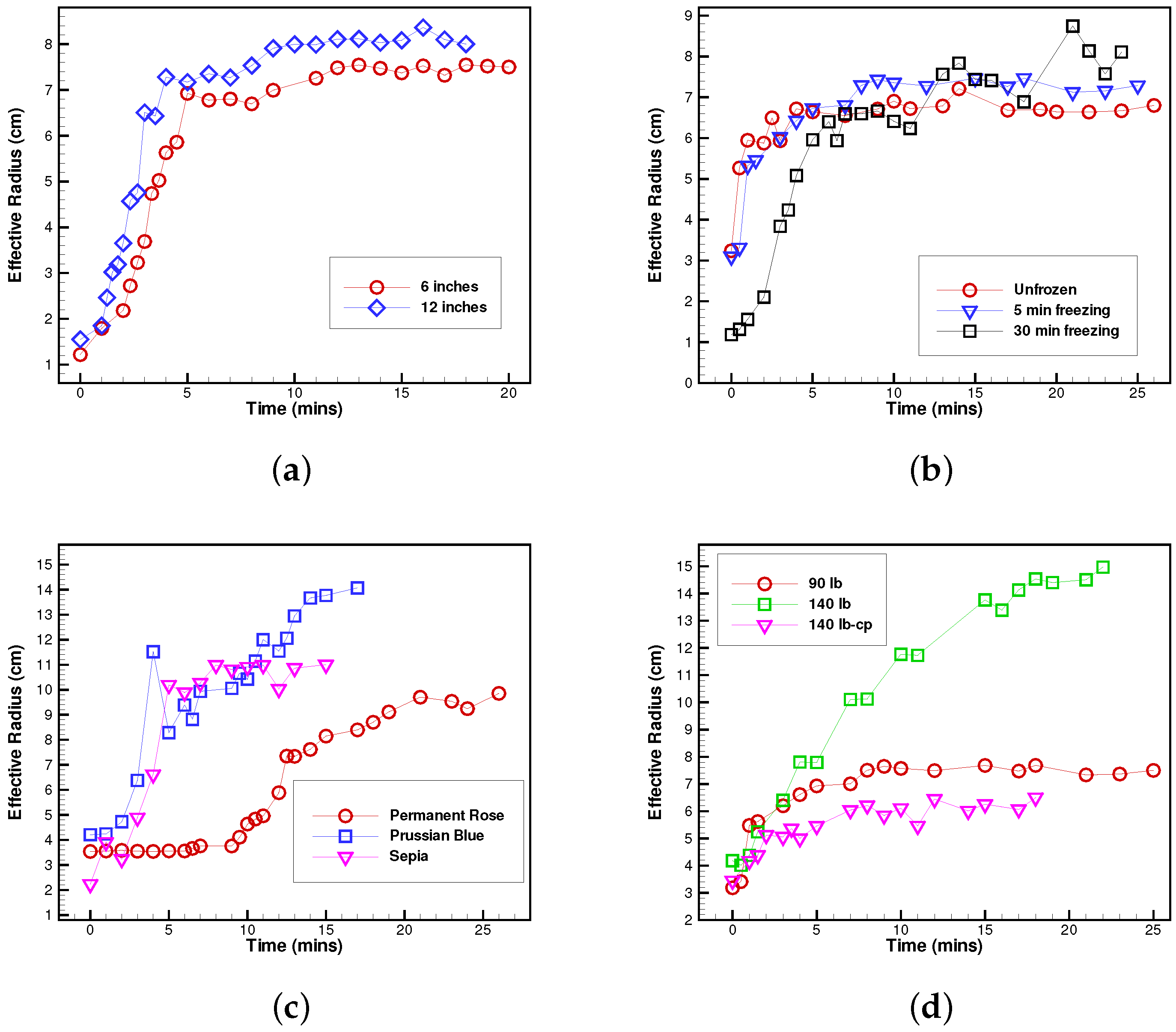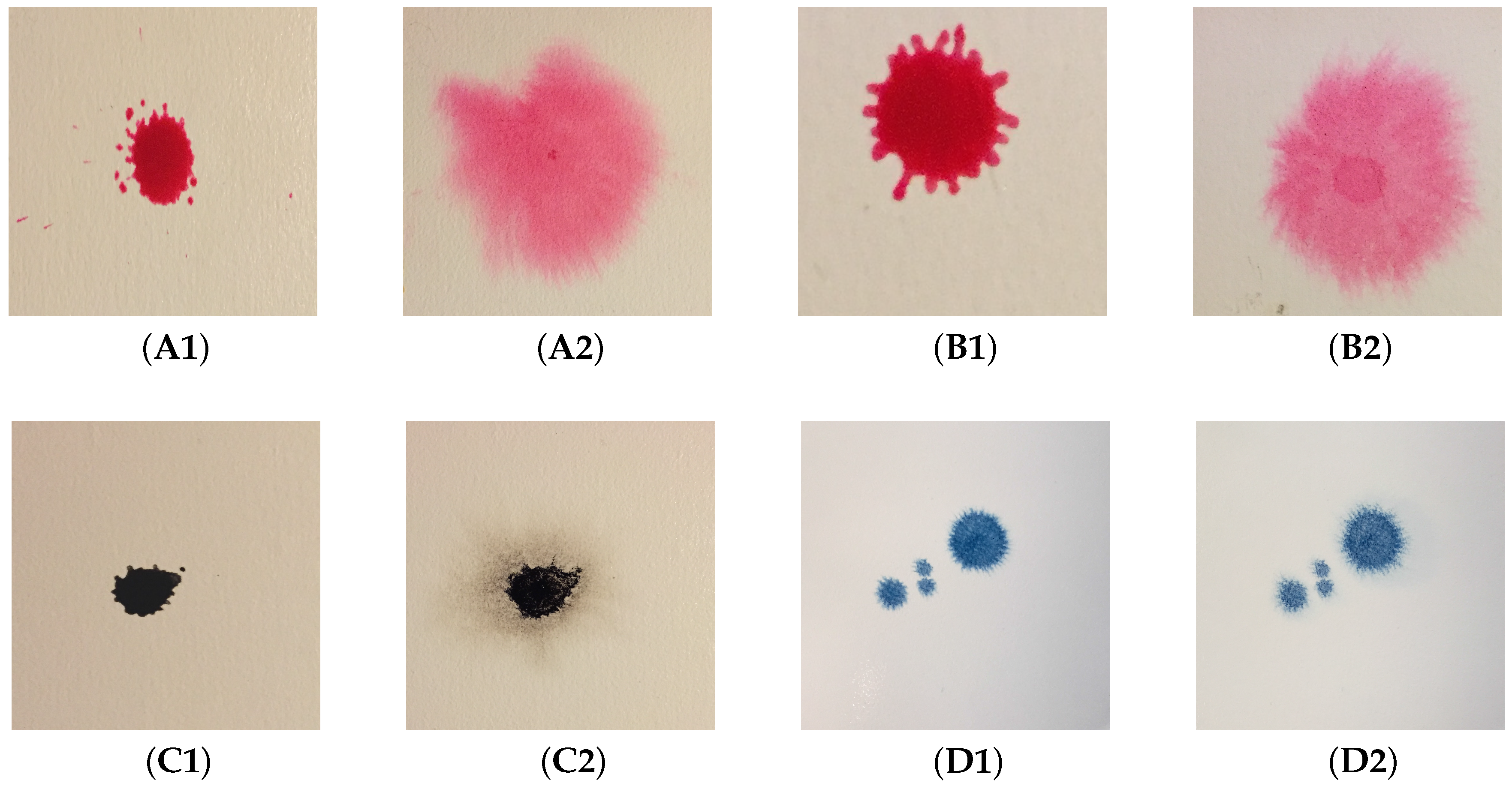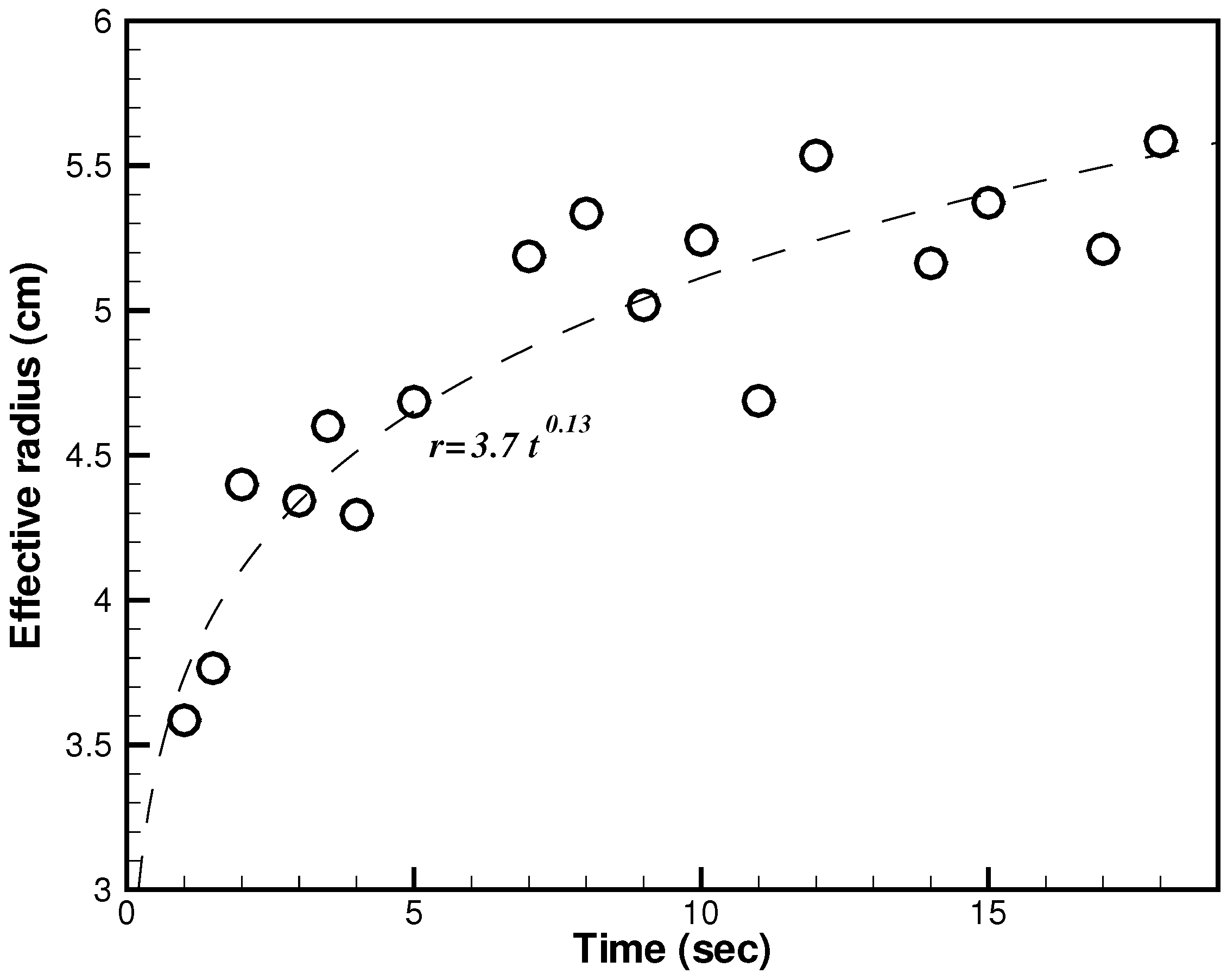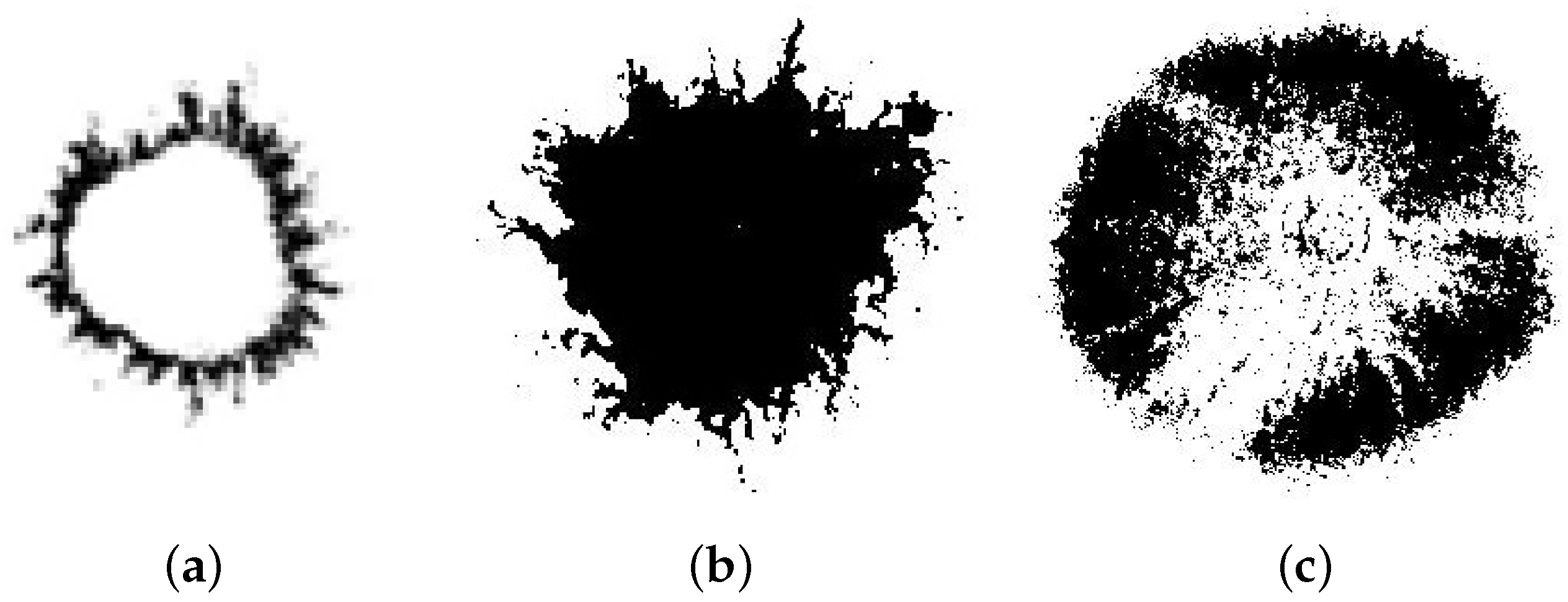Materials and Methods
This experiment was conducted utilizing three types of Winsor and Newton Artist Series watercolor paint, namely, Permanent Rose, Prussian Blue, and Sepia. These pigments were chosen based upon their individual and significantly differing rheological, deposition properties. Each color was available in tube form whereby the pigment was squeezed from the tube and dissolved in clean, filtered water. Three grades of acid-free watercolor paper were used: Arches 140 lb rough, Arches 140 LB cold-press, and Canson 90 lb paper. The papers were cut into smaller pieces measuring roughly 5 in × 7 in and liquid frisket was applied to the edges of each rectangular paper to create a thin latex border in order to reduce and contain water dispersion. Filtered water was then applied with a soft sea sponge to both sides of the paper, a technique known as wet-on-wet, and the paper (or substrate) was mounted flat on a backing board. Excess water was spilled off, and the paper was left to sit for a few minutes to allow the substrate to thoroughly absorb water. The papers were then separated into three categories: unfrozen, frozen for 5 min, or frozen for 30 min A droplet of paint was released onto a substrate from a height of either 6 inches or 12 inches. For the first set of paintings, the droplet was released from a standard drinking straw by holding the thumb over the top, open end, removing the thumb and letting gravity pull down the pigment. For the remaining sets of paintings, a medicine dropper (of outer diameter 4 mm and inner nozzle diameter 1mm) was used to release the droplets. Photographs were taken with a cellular phone camera at roughly 1 min intervals for about 20 min or until the paint spread reached a maximum dispersion. Each digital photograph was analyzed using the ImageJ software (National Institute of Health, Bethesda, MD, USA.)
The volume of each droplet released from the medicine dropper was, on average, about 0.04 mL, while the volume released from the straw was about 0.18 mL. The density,
ρ, of the droplets of the different paints was measured by weighing 10 mL of the solutions and the volume of each droplet was measured by counting the number of drops that made up 10 mL. The density of the different paints ranged between 0.99–1.02 gm/cc. The viscosity of the paints,
μ, was measured using a hand held viscometer and is described in further detail later in this section. The surface tension of the watercolor paints,
σ, could not be measured and was therefore assumed to be the same as that of water. The impact velocity of the droplet from the two different heights was computed using the elementary kinematic formula,
, where
refers to the terminal, impact velocity of the droplet, released from a height
h. We find that
and
. Using these parameters, we can estimate the values of the non-dimensional Weber number and Reynolds number which are given by
where
D refers to the characteristic length in the problem which was taken to be the approximate diameter of the droplet. In this study, the Weber number ranged between 150–323, while the Reynolds number varied from 2600–10,200. Comparing with the
vs. curve shown in ([
17],
Figure 1), we note that our experimental conditions put us in a very interesting part of the phase map which is between the viscous-inertial and capillary-inertial spreading regimes.
Rheology of paint: The rheological properties of the materials used for painting are each important in their respective ways and interact differently with the other agents involved in the process of painting [
16]. Overall, we need to pay particular attention to the following: (1)
the support in these experiments: namely the watercolor paper; (2)
the ground: the first layer on the support,
i.e., the water applied to the paper; (3)
the paint: one or more pigments, and sometimes a brightener, transparent or “white” crystals that lighten the value and increase the chroma of the dried paint dispersed in a vehicle or medium. The paint consists of: a binder, traditionally and still commonly said to be gum Arabic or glycerin used for softening the dried gum and helping it redissolve. The paint also contains humectant, which is made of syrup, honey or corn syrup, to aid in moisture retention; an extender or filler, such as dextrin, to thicken the paint; additives, to prevent clumping of the raw pigment after manufacture and to speed up the milling of the pigment; fungicides or preservatives to suppress the growth of mold or bacteria; and finally water, which dissolves all the ingredients, transports them onto the paper and evaporates quickly [
19]. The pigments within the paints used for this experiment are indicated as follows: Permanent Rose: Quinacridone Red (PV19), Prussian Blue: Alkali Ferriferrocyanide (PB27) and Sepia: Carbon Black and Iron Oxide (PBk6, PR101) [
18]. The viscosity of the paints were measured using a hand-held Haake viscometer (Thermo Scientific, Waltham, MA, USA). Experiments were conducted using approximately 5 mL of pigment dissolved in 30 mL of water. Accordingly, the materials were scaled up to 20 mL of pigment dissolved in 120 mL of water for viscosity measurement purposes. The viscometer was first calibrated to zero dP-s for clean, filtered water, and then the viscosity of each paint type was measured at 15 second intervals for 10 min An average value for each paint was calculated, along with one standard deviation. The
Table 1 lists the average viscosity of the various paints used.
The non-Newtonian characteristics of watercolor paint are not presented in this paper. However, there is reason to believe that paints could be non-Newtonian based on their various components, as mentioned above. Such a multi-component suspension has the tendency to display properties such as yield, thixotropy or dilatancy, which are fundamental non-Newtonian characteristics and extend important properties for a painting purposes ([
19], p. 52). It has long been thought that the low viscosity of the carrier fluid (water) would render the watercolor system Newtonian, but recent work has shown that components such as gum Arabic possess non-Newtonian properties when in solution [
20,
21,
22]. The effect of freezing temperatures upon the paint and surface roughness could also potentially bring out non-Newtonian properties. These are however, not rigorously proven at this stage and need to be investigated in greater detail in the future.
Heating Curves for Canvas: The canvas was wetted on both sides according to the procedure described earlier and placed in a freezer for a duration of 5 and 30 min, corresponding to the two cases of frozen canvas. The freezing times were chosen under the assumption that freezing longer would allow us to maintain the surface as a solid for longer period. The time interval between removal of the canvas from the freezer and the start of the experiment was about 10–15 s. Therefore, no significant melting of the canvas would have occurred during this time. To verify how the temperature of the canvas changed with time, we measured the average surface temperature of the canvas in all three cases using a hand held infrared thermometer (General IRT 206 Infrared Thermometer, Taiwan). The
Figure 2 shows the “heating curves” for all three cases which reveals the classical Newtonian profile. After approximately 10 min, the temperature of all the three canvases reach a common temperature and very slowly converge to room temperature. The melting temperature for the two frozen canvases are approximately at the 1 min and 4 min mark indicated by the dashed lines in the
Figure 2. Prolonged residence times in the frozen state results in reduced viscous resistance for the paint to disperse on the canvas.
Porosity of Canvas: The porosity of canvas was analyzed using the standard water evaporation method [
23]. The pore volume fraction is given by
, where
is the total volume and
is the volume of pores of the form
Our estimations of the porosity of the three different canvas types reveal that the void fractions for 90lb, 140lb and 140 lb cold pressed are 0.489, 0.319 and 0.29, respectively, suggesting 30% to nearly 50% of the canvas being empty space.
Figure 3a–c show the canvas under a microscope with the last one,
Figure 3d showing regular uncoated printer paper under the same magnification for comparison. All the surfaces have been stained with water color paint to highlight surface features. The images reveal substantial coarseness of the surfaces, especially in cases (a)–(c), when compared to plain paper and the porous nature of the canvas, even at such relatively low levels of magnification.
